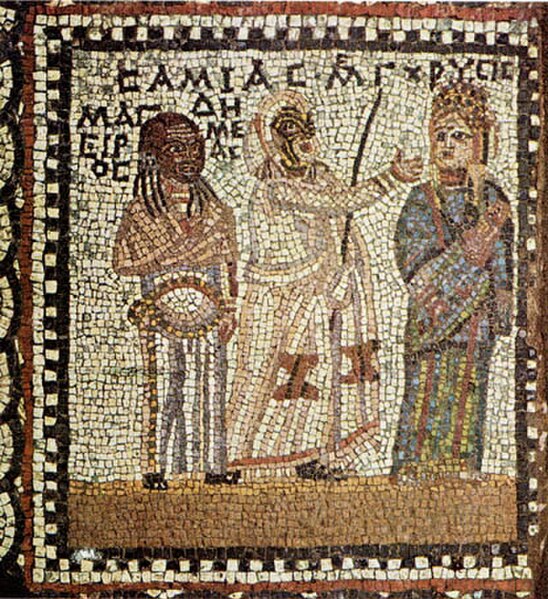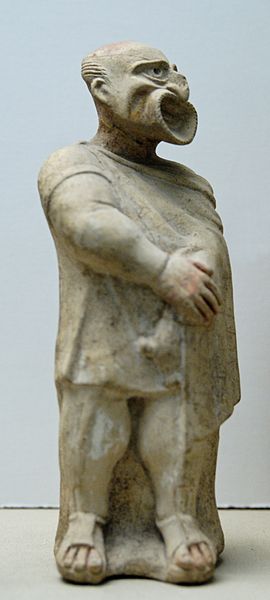Samia, translated as The Girl From Samos, or The Marriage Connection, is an ancient Greek comedy by Menander, who lived from C. 341/2 - c. 290 BCE. It is the dramatist's second most extant play with up to 116 lines missing compared to Dyskolos’s 39. The date of its first performance is unknown, with 315 B.C. and 309 B.C. being two suggested dates. The surviving text of Samia comes from the Cairo Codex found in 1907 and the Bodmer Papyri from 1952.
A scene from Act 3 of Menander's Samia on a mosaic (late 3rd or early 4th century AD)
Roman, Republican or Early Imperial, Relief of a seated poet (Menander) with masks of New Comedy, 1st century B.C. – early 1st century A.D., Princeton University Art Museum
Ancient Greek comedy was one of the final three principal dramatic forms in the theatre of classical Greece. Athenian comedy is conventionally divided into three periods: Old Comedy, Middle Comedy, and New Comedy. Old Comedy survives today largely in the form of the eleven surviving plays of Aristophanes; Middle Comedy is largely lost, i.e. preserved only in relatively short fragments by authors such as Athenaeus of Naucratis; and New Comedy is known primarily from the substantial papyrus fragments of Menander.
Actor on a Sicilian red-figured calyx-krater (c. 350–340 BC).
Terracotta comic theatre mask, 4th/3rd century BC (Stoa of Attalus, Athens)
Marble image of a theatre mask, 2nd-century BC.
An actor in the mask of a bald man, 2nd century BC






